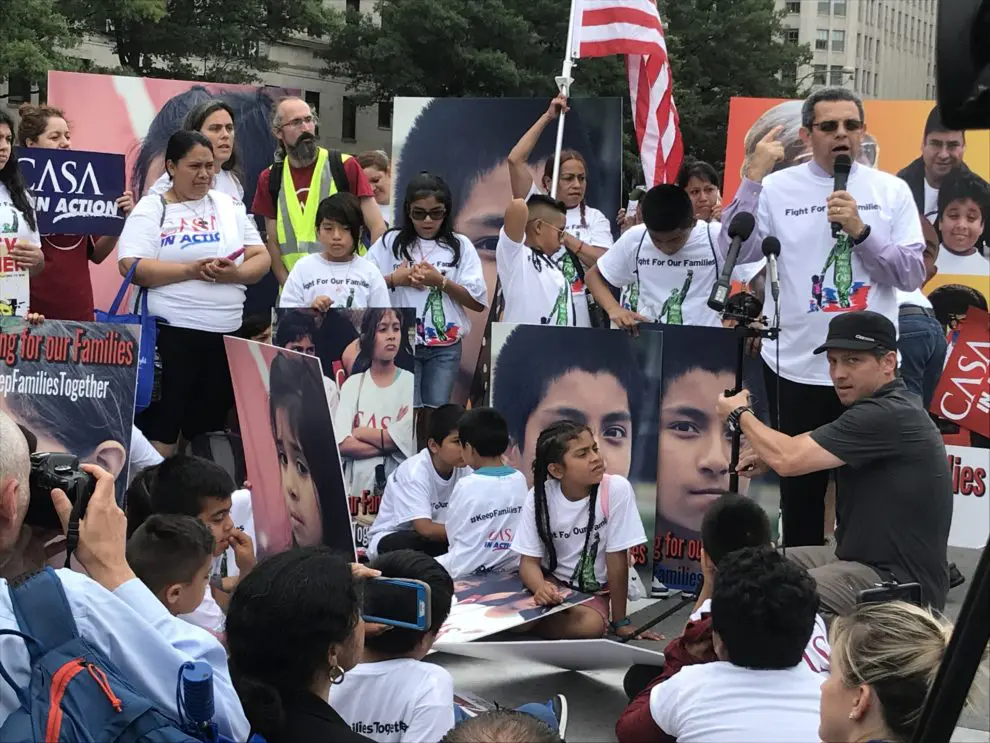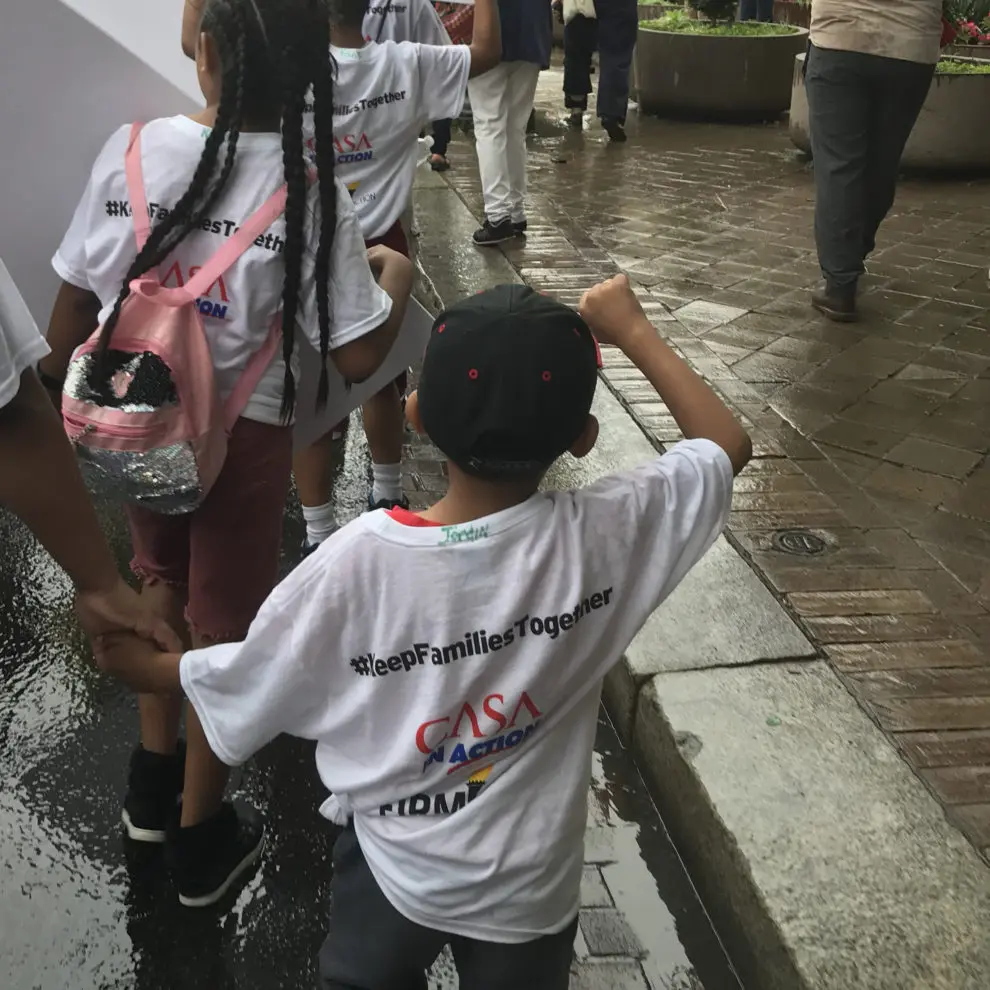
Last Wednesday, before the marches that took place during the weekend of more 750 events with Families Belong Together, a group of young children, likely no older than 12, led a march in the pouring rain along Pennsylvania Avenue, from Freedom Plaza to the Capitol building, in protest of the “zero tolerance” immigration policy that resulted in mass separation of immigrant families.
The children exuded innocence — splashing in puddles, opening their mouths to taste the raindrops, laughing amongst themselves — and simultaneously displayed a deep understanding of the very adult issue they were advocating against.

These children held signs and donned t-shirts that read Fight for Our Families and #KeepFamiliesTogether, taglines of the rally sponsored by nonprofits CASA and Fair Immigration Reform Movement (FIRM), and they joined in on the crowd’s chants of “Trump, escucha, estamos en la lucha!” (“Trump, listen, we are still in the fight!”) or “Sí se puede!” (“Yes we can!”).
Some of the children even gave speeches to the crowd before the march began. Eleven-year-old Gabriela Rodriguez shared her and her younger sister’s fear that their family might be torn apart, too. Ten-year-old Izayah Cavero said the separation children on the border are experiencing “is like a sword, stabbed in your heart, of sadness” and just the thought of being separated from his own family gives him that same pain.
The rally and march occurred the morning after a judge in California, by means of a preliminary injunction in the Ms. L v. ICE suit, ordered that children separated from their families at the border must be reunited within 30 days, and children under five must be reunited within 14 days. Just a few days earlier, President Trump issued an executive order (EO) — rife with vague language and lacking in solutions — which called for an end to family separation.

The children who spoke at the rally iterated the executive order was a bandage attempting to cover a years-old wound in this country concerning immigration at the southern border. While the detention of migrants is not new— First Focus has opposed this practice for years — it is the hope of advocates that it will end with each new administration.
President Trump’s order did not put an end to family separation. It simply made family separation a last resort. It directs the Department of Justice to request a modification of the Flores Settlement Agreement so that “accompanied” children may be detained with their parents—it’s important to note, however, that the Flores Settlement Agreement was put in place to protect children and should not be rolled back.

The language in the EO ultimately allows for family detention, which is still leads to long-term trauma for children, family separation when family-friendly facilities run out of beds, and prolonged family separation due to a lack of well-defined reunification procedures.
Judge Dana Sabraw detailed the issue with the order’s lack of solution in her Ms. L v. ICE order:
“The language of the EO is not absolute, however, as it states that family unity shall be maintained “where appropriate and consistent with law and available resources[,]” and “to the extent permitted by law and subject to the availability of appropriations[.]”
The EO also indicates that the Administration’s zero tolerance policy will continue which will result in more family separation.
And finally, although the order speaks to a policy of “maintain[ing] family unity,” it is silent on the issue of reuniting families that have already been separated or will be separated in the future.”
Children should not be detained, period. Like the children I marched with on Wednesday, children crossing the border with or without their families deserve to splash in puddles and drink raindrops whenever they so please. The innocence that remains within them following an approximately 1,000 mile journey to flee violence in their home countries should be preserved at all costs — and detention of any kind causes irreparable harm.
The preliminary injunction in the Ms. L v. ICE case, ordering the somewhat-speedy reunification of separated families, is a great start to fixing the crisis on the U.S. southern border, but it can’t be the end of our fight. Children are still sitting alone in detention centers or living with families of strangers thousands of miles from their parents. There is work to be done, so let’s do it.
Some resources to help reunite families: